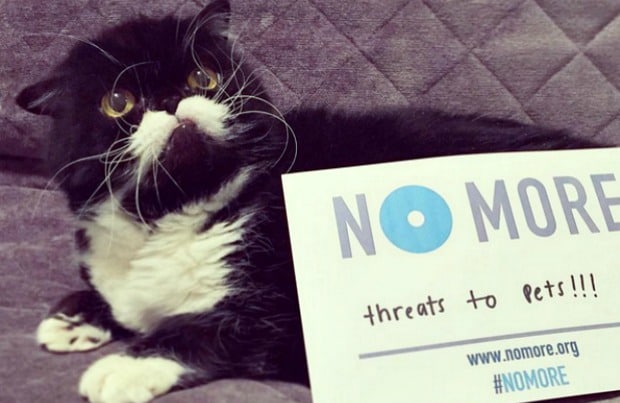If you’ve ever looked at your furry feline friend and decided to skip the tricks training because you think it would just be too hard, you might want to reconsider. In fact, “If your cat is seriously food driven, cats can be much easier to train than dogs,” says Mieshelle Nagelschneider of The Cat Behavior Clinic and author of The Cat Whisperer. “I’ve had cats learn tricks in 30 seconds just by watching me teach another cat.”
If you are interested in how to train your cat to do tricks, don’t expect him to act like your dog did when you were training him—pet training is different for different species. There are a lot of social differences between cats and dogs that will play into how they learn, says Nagelschneider. For example, “Dogs want to please; cats do not,” she says, “so dogs can be easier on this front. Dogs want to be with us, since they are of a pack mentality, so walking on a leash by our side can be much easier to accomplish with a dog than with a cat. With cats, there has to be something in it for them, a motivation of some sort. Food is the best in many cases.” (If you’re looking for a healthy treat to start training your cat with, try Halo Liv-a- Littles Grain-Free 100% Chicken Breast Freeze-Dried Dog & Cat Treats—your cat will love them!)
If you’d like to learn how to train your cat, Nagelschneider suggests starting with behaviors that your cat already does, and training him to do them on command. “My cats use their paws a lot to paw at toys—as do most cats—and I have shaped that behavior into pawing and touching my hand,” she says.
Other easy cat training tricks include coming when called (most cats will actually do this already, especially if you have a treat like Greenies Feline Oven Roasted Chicken Flavor Dental Cat Treats to offer him when he does), sitting, going to a certain location in the home—like a cat tree house or their cat bed—and anything with their paws, like touching your hand to high-five.
If food doesn’t appear to be working as motivation for your cat training, Nagelschneider said some cats are more motivated by affection. “A few of my cats love to be brushed and scratched under the chin,” she says. “In fact, one of my cats prefers petting attention over anything else.”
At the end of the day, while it’s true that you likely can teach your cat some tricks, you will probably have more fun if you learn to tamper your expectations a bit. “Cats are not going to ‘obey’ like dogs will,” says Nagelschneider. “The motivation to stay part of the pack isn’t there for cats as it is with dogs. Cats are not pack animals, or they’d readily jog with us by our sides.”
As an example, while Nagelschneider say her cats will go on “walks” with her on their cat harness and leash (try the PetSafe Come With Me Kitty Harness & Bungee Cat Leash or Red Dingo Classic Cat Harness & Lead Combo), she’s more likely to call these meandering adventures than actual walks.
Additionally, if food and affection aren’t working for your pet training, you can always switch to something else. Nagelschneider says leading her cats with a wand toy has been really effective to help guide their walking behavior down the sidewalk, for example.
With a little patience and the right tools, cat training can be fun for both you and your cat. Plus, aren’t you ready to point out your cat’s smarts to all those people who have been showing you their dog tricks for years now?
Share:













